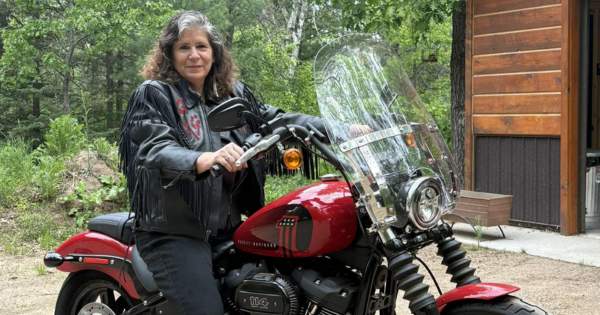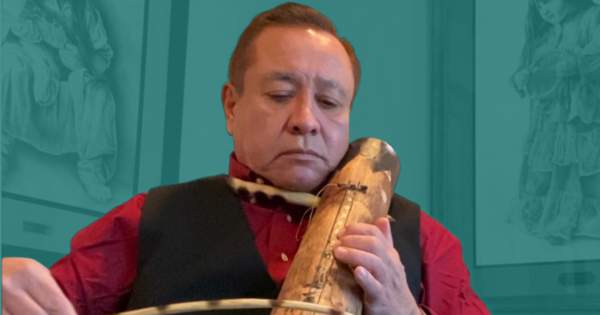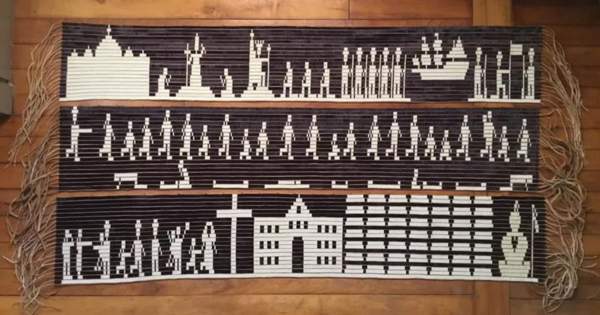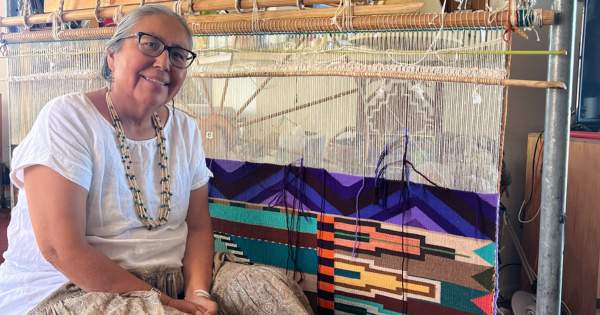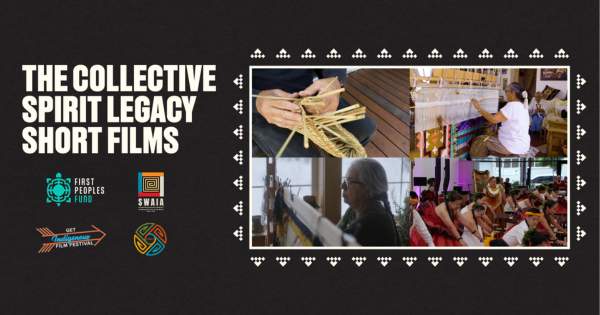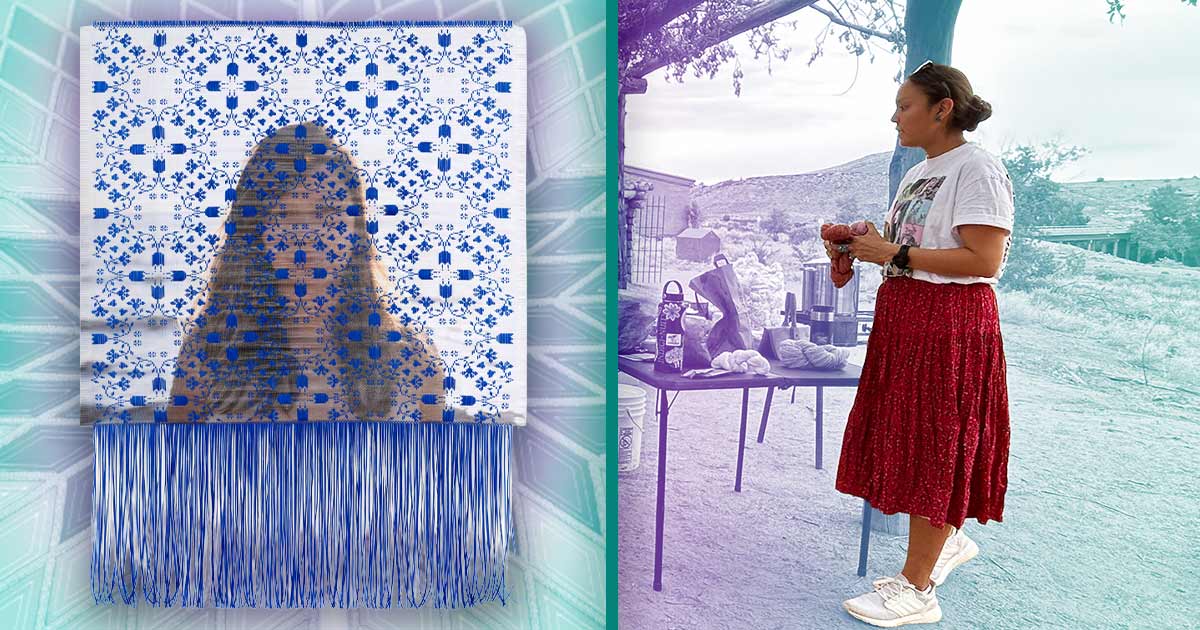
A Tradition of Mistakes And Motherhood
Marjorie Kunaq Tahbone has a wide range of talents and skills centering on her Iñupiaq and Kiowa heritage.
Raised at her family fish camp outside of Nome Alaska, Marjorie uses resources from the land to create her art. It is important for her to learn the skills of hide tanning, skin sewing, and the knowledge that has been passed down for generations because it is essential to having a strong cultural identity. She also works to teach these valuable skills to those interested in learning. Using traditional art forms and designs inspires Marjorie to create modern art that allows for a deeper connection to her ancestors. She is working on a master’s degree in Indigenous Studies at the University of Alaska Fairbanks. Marjorie is a 2021 Artist in Business Leadership Fellow.
Marjorie Kunaq Tahbone (Inupiaq, Kiowa) is a traditional seamstress and fashion designer.
And she makes mistakes.
From a young age, her mother encouraged missteps and errors. Tahbone was raised in a fish camp outside Nome, Alaska, and her mother let her fail, especially while learning traditional seal tanning techniques. “My mom gave me liberty to make mistakes [while tanning] seal,” Tahbone says.
Because, and as her mother put it, you have to start somewhere.
But through failing and learning, Tahbone strengthened her skills to sew kammak, or traditional mukluks boots. “My process is to learn how it was done traditionally,” Tahbone says. “So I do research. I look at books and pictures. I try to do it the way that my ancestors have done it. Then I start using my own artistic mind [by] using different materials and different designs.”
“[First Peoples Fund] helped me not just financially, but they developed my foundation,” Tahbone says. Several years ago, she participated in First Peoples Fund’s Native Artist Professional Development (NAPD) program, where she learned how to write an artist statement and an artist resume. NAPD hosts virtual webinars on business topics like social media marketing, artist calendaring, contract negotiations, and more (watch archived webinars on First People Fund’s Youtube Channel). Eventually, Tahbone went from attending these workshops as a student to teaching them as a certified NAPD trainer. And recently, she co-instructructed an entrepreneurship workshop titled Pricing + Marketing + Artists Calendaring.
Eventually, Tahbone was selected as a 2021 ABL fellow and has taught virtual classes on Naniq carving (seal oil lamp).
“I'm just really honored to be in this position where First Peoples Fund supports me [and] I can do projects.”
- Marjorie Kunaq Tahbone
Traditional Motherhood
In May 2021, Tahbone began a 5-year project (which her ABL fellowship will help support) that will teach Indigenous mothers and women how to process ugruk — an arctic seal — for seal oil, food, and hides. “These women learn to get out of their comfort zone and make mistakes,” Tahbone says. “But [they] feel good about doing something that their ancestors have done since time immemorial.”
When asked why this project is necessary, Tahbone continues, “I want to empower women [who] feel like they can’t speak up. I'm still learning how to speak up because I was raised in a colonial mentality that women must be polite and be kind and smile and not cause a ruckus. So I'm using my art to [cause a ruckus].”
What also empowers Tahbone is motherhood. “I teach my [3-year-old] daughter [that] she's allowed to make mistakes. She’s growing and learning. And I feel like a lot of adults need that support,” she says. “We are raised to not make mistakes. And if we do, we're not good. We need to get rid of that mentality and start bringing back our traditional ways of raising people with love.”
This includes traditional motherhood. Tahbone elaborates, “Our traditional parenting is showing love [while children] try and practice on their own. It's so valuable.” For instance, Tahbone describes her daughter as an independent dresser: “My daughter [will] say, ‘I need to do this by myself,’ and so she will. She’ll put on her clothes all by herself. They'd be backwards or inside out. I don't correct her. It still functions as a shirt, and she feels proud that she did it on her own. And I just love it.”
